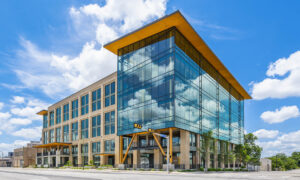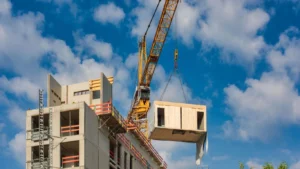
As the world shifts toward sustainable living, earth-based architecture has re-emerged as a powerful example of how ancient building techniques can meet modern environmental needs.
Among the most popular methods are rammed earth and adobe construction both using natural materials such as soil, clay, sand, and straw to create durable, eco-friendly structures.
From desert dwellings to contemporary eco-homes, earth-based construction offers a timeless balance between strength, beauty, and sustainability.
What Is Earth-Based Architecture?
Earth-based architecture refers to building systems that use earth as the primary material for walls and structures.
This includes techniques like rammed earth, adobe, cob, and compressed earth blocks (CEB).
The goal is to harness the earth’s thermal mass, local availability, and low environmental impact to create energy-efficient buildings.
These methods date back thousands of years, seen in the Great Wall of China, the pueblos of the American Southwest, and traditional homes in Africa, the Middle East, and South America.
Rammed Earth Construction
Rammed earth involves compacting layers of moist soil mixed with sand, clay, and sometimes stabilizers (like lime or cement) inside temporary molds or formwork.
Once the formwork is removed, the compressed wall becomes solid, resembling natural stone with beautiful color variations.
Key Features of Rammed Earth
- Durability: When properly sealed, rammed earth walls can last centuries.
- Thermal Regulation: The dense walls maintain stable indoor temperatures by absorbing and slowly releasing heat.
- Aesthetic Appeal: Natural striations and earthy tones create a warm, organic look without the need for paint.
- Low Carbon Footprint: Uses local soil and minimal processing compared to concrete or steel.
Rammed earth is now used in modern architecture for homes, schools, wineries, and museums blending sustainability with sophistication.
Adobe Construction
Adobe is another traditional earth-building technique that uses sun-dried bricks made from a mixture of clay, sand, straw, and water.
These bricks are shaped in molds, dried naturally in the sun, and then stacked with mud mortar to form walls.
Key Features of Adobe
- Simplicity and Accessibility: Can be built with minimal tools and locally sourced materials.
- Insulation and Comfort: Thick adobe walls offer excellent insulation, keeping interiors cool in summer and warm in winter.
- Cultural Heritage: Adobe structures are common in regions like Mexico, Peru, Morocco, and New Mexico often featuring smooth, curved walls and natural finishes.
- Repairable and Recyclable: Damaged sections can be easily repaired with the same material, making adobe highly sustainable.
Environmental Benefits of Earth-Based Construction
- Low Energy Use
Building with earth requires far less energy than manufacturing steel, concrete, or fired bricks. - Natural Climate Control
The thermal mass of rammed earth and adobe walls helps reduce dependence on air conditioning and heating systems. - Non-Toxic and Breathable
Earth-based materials naturally regulate humidity, improving indoor air quality. - Locally Sourced Materials
Using soil from the building site reduces transportation emissions and supports local economies. - Long Lifespan and Recyclability
Many ancient earth structures have lasted for centuries and when they do decay, they return harmlessly to the ground.
Challenges and Modern Innovations
While earth-based methods are environmentally friendly, they come with challenges such as moisture resistance, building regulations, and limited availability of skilled labor.
Modern innovations address these issues through:
- Stabilized earth mixtures (adding small amounts of lime or cement) for improved strength and water resistance.
- Prefabricated rammed earth panels that can be manufactured off-site.
- Hybrid systems, combining rammed earth with steel or timber frames for structural support.
Architects around the world from Australia to California are now blending ancient earth techniques with modern engineering to create eco-conscious, contemporary architecture.
Key Differences Between Rammed Earth and Adobe
| Feature | Rammed Earth | Adobe |
|---|---|---|
| Construction Method | Compacted soil in layers within formwork | Sun-dried clay bricks stacked with mud mortar |
| Strength | Higher compressive strength | Slightly lower, depends on soil mix |
| Moisture Resistance | Better with stabilization and sealing | Requires roof overhangs and plaster for protection |
| Aesthetic | Striated, natural stone-like texture | Smooth, uniform earthen finish |
| Labor Intensity | Mechanized compaction possible | Labor-intensive, handmade process |
| Lifespan | 100+ years with maintenance | 50–100 years, depending on climate |
Applications in Modern Architecture
Earth-based construction is making a comeback in:
- Eco-resorts and sustainable tourism projects
- Passive houses and zero-energy homes
- Community centers and schools in arid climates
- Luxury homes seeking natural aesthetics
Architects such as David Easton and firms like Rammed Earth Works have pioneered modern designs that showcase how ancient materials can meet today’s sustainability standards.
Key Facts
| Feature | Description |
|---|---|
| Main Materials | Clay, sand, silt, straw, lime (optional) |
| Building Types | Rammed Earth, Adobe, Cob, Compressed Earth Blocks |
| Environmental Impact | Very low carbon footprint |
| Thermal Properties | High thermal mass for temperature regulation |
| Durability | Can last centuries with proper care |
| Common Regions | Africa, Asia, South America, Australia, Southwestern USA |
| Modern Use | Eco-homes, public buildings, art galleries, museums |






